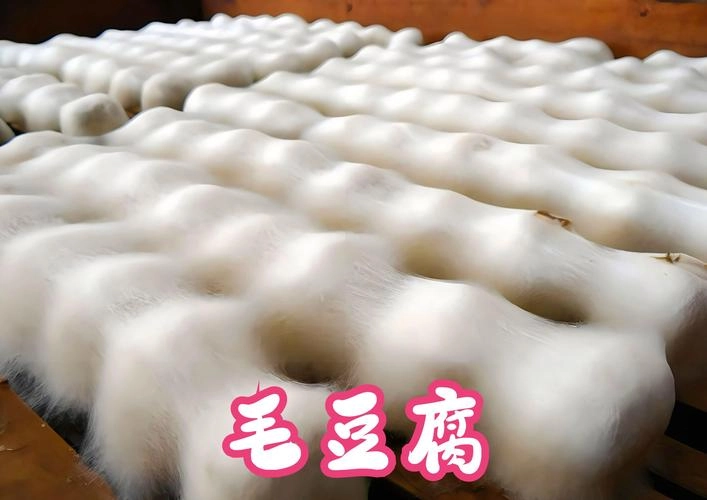A Culinary Journey into the Depths of Huangshan’s Maodufu: A Delicacy with a Rich Heritage
Introduction:
As a food connoisseur and practitioner, I am often drawn to the unique and the traditional. In the heart of Anhui Province,黄山市, lies a culinary gem that has been cherished for centuries. This is none other than the Maodufu, a dish that is as much a part of the local culture as it is a testament to the ingenuity of Chinese cuisine. Known for its distinctive fermentation process and crispy texture, Maodufu is a dish that has been named “Hupi Maodufu” by the famous scholar Zhu Xi, and it stands today as a non-material cultural heritage of China.
Origins and Cultural Background:
The origins of Maodufu date back to the Song Dynasty, where it is said to have been a staple in the diet of the local people of Huangshan. The dish has been passed down through generations, each adding their own twist to the recipe, but the essence of the dish remains true to its roots. The name “Hupi Maodufu” was given by Zhu Xi, who was captivated by the tiger-skin-like texture of the fermented tofu, a feature that has become synonymous with the dish.
Ingredients and Preparation:
The making of Maodufu is a delicate process that requires precision and patience. The primary ingredient is tofu, which is allowed to ferment for a specific period to develop a velvety layer of mycelium, or “hair,” as it is commonly referred to. This fermentation process is crucial as it imparts a unique flavor and texture to the tofu. The tofu is then deep-fried in hot oil, which gives it its signature crispy exterior while maintaining a tender interior.
Texture and Appearance:
When properly prepared, Maodufu is a marvel to behold. The outer layer, after frying, is golden brown and crispy, resembling the skin of a tiger, hence the name “Hupi.” The fermentation process creates a fine, white, and delicate “fur” that covers the surface of the tofu. Upon cutting into the tofu, one is greeted with a soft, white, and creamy interior that contrasts beautifully with the crispy exterior.
Signature Dishes and Culinary Features:
Maodufu can be enjoyed in various ways, but the most traditional method is to pan-fry it with a touch of oil until the surface is crispy and the “fur” is a golden brown. It is often served with a side of chili sauce or a sweet and sour sauce, which complements the savory and slightly sour taste of the tofu. The dish is also known for its health benefits, as tofu is a great source of protein and the fermentation process enhances its nutritional value.
Culinary Characteristics:
The culinary characteristics of Maodufu are its unique fermentation process, which gives it a distinct flavor profile, and the contrasting textures of the crispy exterior and the soft interior. The “fur” adds a layer of complexity to the dish, both visually and in terms of taste. The dish is a perfect blend of tradition and innovation, offering a taste of history with every bite.
Conclusion:
Maodufu is more than just a dish; it is a piece of Huangshan’s culinary heritage. As a food practitioner, I am in awe of the craftsmanship and the story behind this delicacy. It is a testament to the ingenuity of the people of Anhui and a dish that deserves to be savored and celebrated. Whether you are a food lover seeking new flavors or a historian interested in the evolution of Chinese cuisine, Maodufu offers a unique and unforgettable experience.
